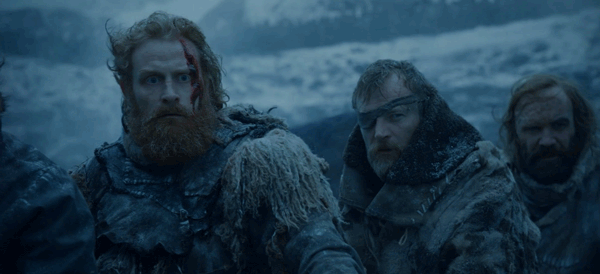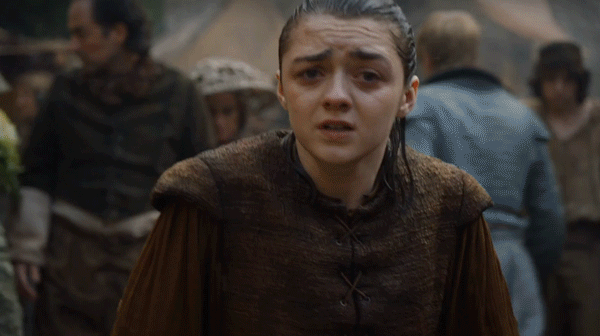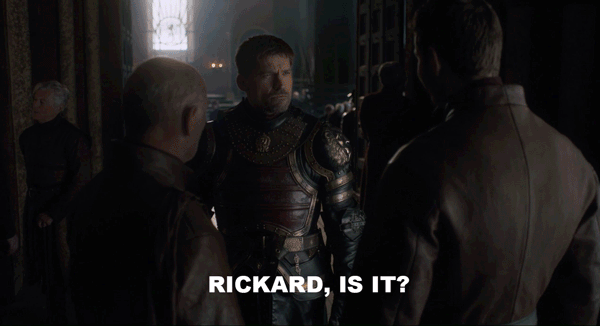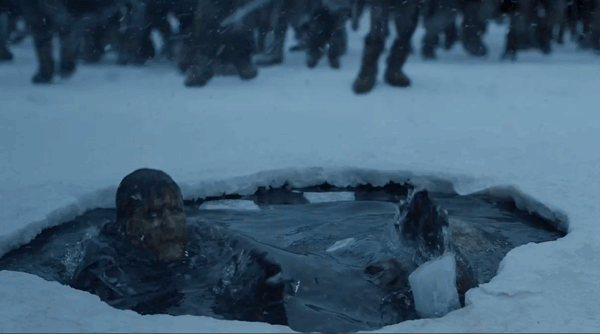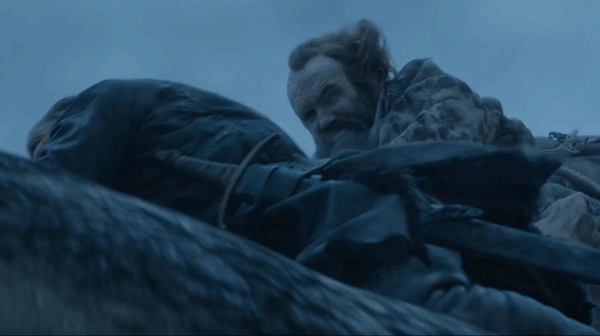This post contains frank discussion of Season 7, Episode 6 “Beyond the Wall.” If you’re not caught up or don’t want to be spoiled, now would be the time to leave. Seriously, I won’t warn you again. Skedaddle.
At the end of last week’s episode we saw Game of Thrones strain plot credulity in order to walk seven named heroes—Jon, the Hound, Jorah, Tormund, Gendry, Beric, Thoros—into a fight they could not possibly win. This was, everyone rightly surmised, a suicide mission. Seven men, however battle-tested, were not going to come out of a clash against the army of the undead unscathed.
Except that is, for the most part, exactly what happened. With all due respect to Thoros of Myr (R.I.P.), the least well-known out of seven characters was sacrificed. Sure, it was smart to kill Thoros early on because, without his resurrection powers, the rest of the heroes (even resurrected ones like Jon and Beric) were vulnerable to death. Except, as it turns out, they weren’t. All of the memes comparing this band of brothers to the Seven Samurai or the Magnificent Seven seem kind of laughable now. Those stories are given such enduring weight because the heroes nobly died to protect the innocent.
We can, if we’re feeling generous, go ahead and say there were two major casualties of “Beyond the Wall,” but only if you can tell me, by name, which of Daenerys’s spare dragons went down in the fight. No, “not-Drogon” doesn’t count. In a behind-the-scenes interview, showrunner D.B. Weiss admits they were leaning entirely on the dragon’s death to deliver the stakes of this episode. “It’s very close to one of those battles where all the good guys get out the other side more or less scott-free,” he says of “Beyond the Wall.” He adds: “Killing the dragon was going to have a tremendous emotional impact because over seasons and seasons of the show it’s been emphasized what they are to Dany.” To its credit, the episode tried very hard to convince us this dragon’s death was a massive tragedy as all the characters we do care about watched helplessly as he drowned.
But, hilariously, as Weiss was saying exactly how much that non-Drogon dragon mattered to Daenerys, the editors at HBO played clips of Daenerys scenes with Drogon because that’s literally the only dragon they’ve shown her bonding with.
And as little an overall impact this spare dragon has, the sacrifice of an undead barely-there character like uncle Benjen has even less. (Why, exactly, did he not have time to join Jon on that back of that horse? As showrunner David Benioff helpfully explains in the behind-the-scenes interview for this week: “There just isn’t any time.”) For a show that once built its reputation on killing anyone at any time, Game of Thrones has become surprisingly toothless in its old age.
The penultimate year of a seven-season stretch is exactly when major heroes should be dropping like flies. Particularly when you take into consideration the thesis statement of George R.R. Martin’s original draft. In 1993 he wrote to his publisher of A Song of Ice and Fire:
The cast will not always remain the same. Old characters will die, and
new ones will be introduced. Some of the fatalities will include
sympathetic viewpoint characters. I want the reader to feel that no
one is ever completely safe, not even the characters who seem to be
the heroes. The suspense always ratchets up a notch when you know that
any character can die at any time.
Does that feel like the world of Westeros anymore? In fact, this reluctance to kill major characters has been a problem on Game of Thrones for a while now. Our most important heroes are again and again put into death-defying positions only to have them . . . defy death. This happened twice to Jon Snow in last season’s “Battle of the Bastards.”
And to Arya after multiple and terrible stab wounds to the gut in “The Broken Man.”
And again to Jaime Lannister in this year’s “Spoils of War.”
When giving interviews about the battle between Bronn/Jaime and Daenerys/Drogon, showrunners Weiss and Benioff proudly pointed out that they had arranged a showdown (between Jaime and Daenerys) where viewers would be upset if someone on either side died. But that kind of tension feels cheap if neither side actually suffers. Jaime wasn’t captured or even singed for his troubles. And, no, we won’t count the death of Dickon Tarly as a major loss in that battle when people weren’t even sure what his name was for most of the season.
That brings us to tonight’s episode where, again and again, heroes whom the show had no intention of killing off were put in impossible-to-escape situations. Whether it was Tormund buried in wights. . .
. . .or Jorah dangling off the side of Drogon.
The most egregious of all, again, was Jon Snow, who seemed to drown in an icy lake being pulled down by an army of wights. Even the King in the North couldn’t seem to believe his luck when, once again, he defied all odds and, with zero explanation as to how, emerged unscathed.
But unbelievable survival seems to be the new world order on Game of Thrones, where we would surprised if a battle episode didn’t end in a deus ex machina like the Knights of the Vale, a lunging Bronn, Daenerys and her dragons, or Benjen and his fiery flail. Instead, in this episode, it was up to the red shirts (a.k.a. the unnamed wildlings) joining Jon on this foolish quest to make up the “good guy” body count. The fact that every single one of them died this week is unsurprising but also very boring storytelling.
If Jon Snow is basically unkillable at this point, then the show needs to stop pretending it might off him and start killing off other major characters in the meantime. The high body count last season was mostly fed by recently returned characters who only had a flash of screentime before dying. Osha, the Blackfish, Balon, and, yes, Rickon all returned just to die. Side characters, both beloved and not, like Olenna, the Sand Snakes, Walder Frey, and the Tarlys are similar low-stakes fodder this year. And while last season’s blockbuster sept explosion felt massive, it was really only Margaery Tyrell who proved a significant loss.
I’d say the only deaths in the past three seasons that have truly felt like a tragic, Martin-esque twist of the knife have been Oberyn Martell in Season 4 and Hodor (a Martin-planned fatality) in Season 6. And we can have some sympathy for Weiss, Benioff, and the rest of the Game of Thrones writing staff here. How do you deliver poignant and unexpected deaths on a show where a) you’re out of source material to work with and b) your show has become famous for its fatal surprises. Truly, how can anything surprise at this point?
But still, I’d trace all this hollow-feeling carnage back to the resurrection of Jon Snow—which still feels like it has no enduring consequences in the world of Game of Thrones. Ditto the (admittedly welcome) return of the Hound. Sandor Clegane also doesn’t die in the books, but don’t all these resurrections make death feel cheap in Westeros when once it was the show’s most famous calling card? The show seems to be coasting on the audience’s expectation that anyone could die to try to make us swallow unbelievable cliffhanger after unbelievable cliffhanger.
Hopefully, in its final battle-filled season, Game of Thrones will find its bite again. “Beyond the Wall” was certainly “exciting,” but was it emotionally satisfying? I guess that all depends on how much you care about Thoros of Myr or Viserion—yep that’s the name of Daenerys’s late, barely-used dragon, whose possible resurrection as an ice dragon could very well give the show exactly the stakes we’re asking for.




















![[Book Review] The Blade Itself (The First Law Trilogy) by Joe Abercrombie](https://bendthekneegot.com/wp-content/uploads/2018/01/1516047103_maxresdefault-218x150.jpg)







-696x392.jpg)
